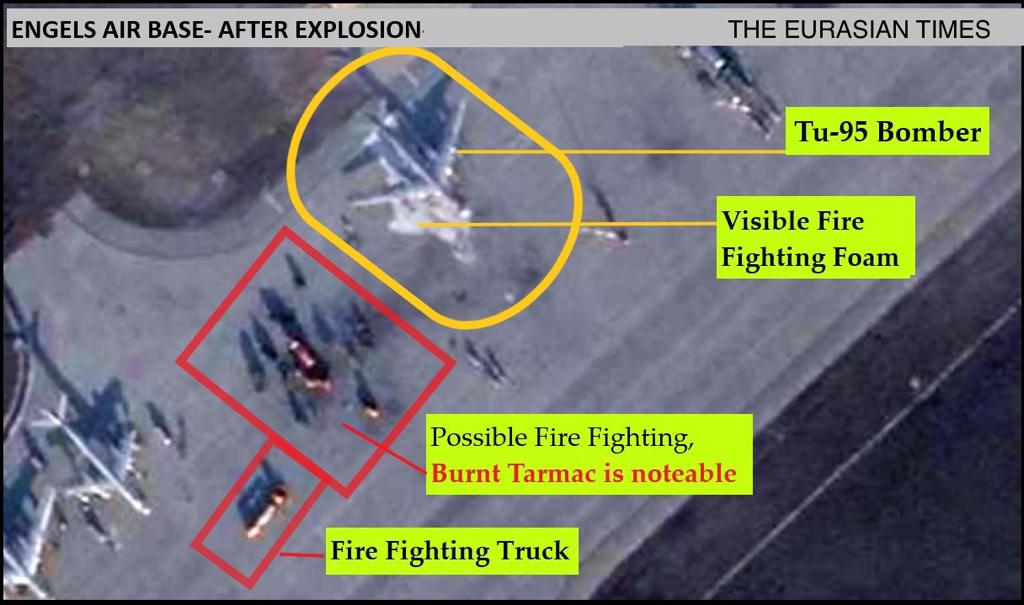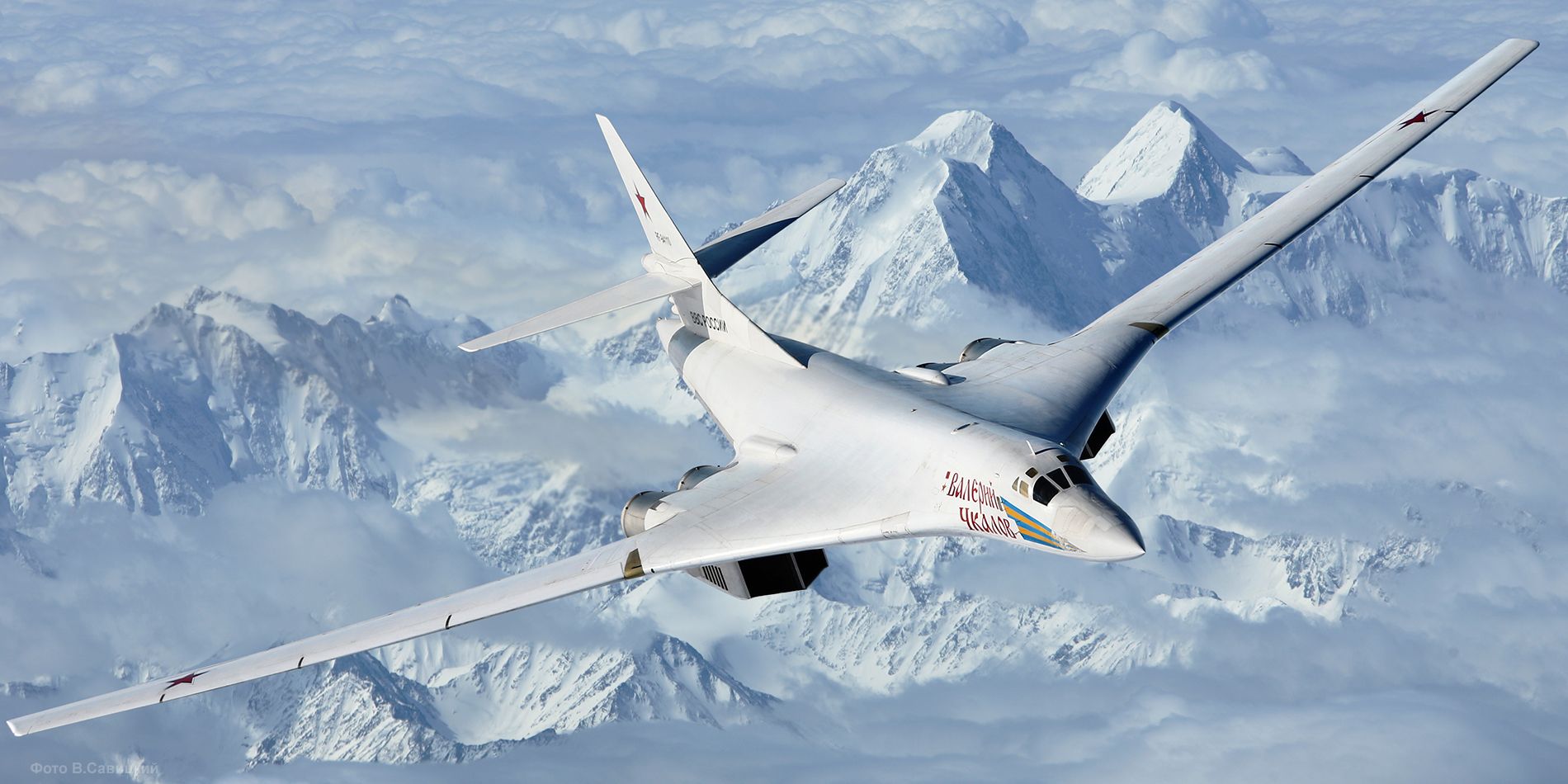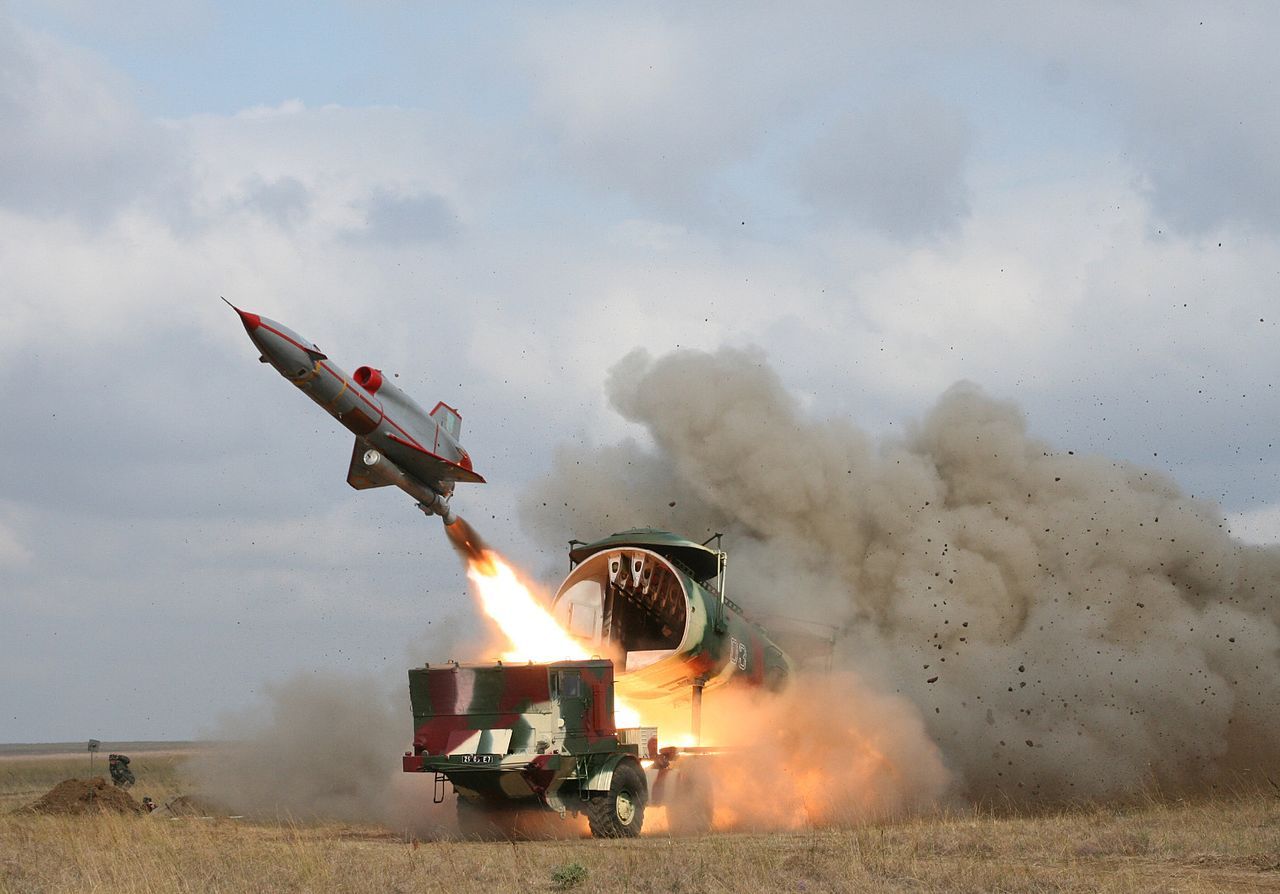The Russian Aerospace Forces (VKS) have reportedly moved its long-range Tu-95 nuclear-capable bombers to a safe location in the far east, days after Ukraine launched a second strike on a Russian Air Force Base.
Ukrainian government sources have claimed that at least six Tupolev Tu-95 “Bear” aircraft from Russian Aerospace Forces (VKS) Long-Range Aviation (LRA) have been transferred from Engels-2 Air Base to Ukrainian-Seryshevo Air Base following three drone strikes in December.
While Engels-2 is 600 kilometers to the east of Ukrainian-controlled territory, Ukrainka-Seryshevo is over 6,000 kilometers away from Ukraine.
The base in the Amur Oblast region of Russia, where the bombers have been shifted, houses the 326th Heavy Bomber Division and the 182nd Heavy Bomber Aviation Regiment that also fields the Tu-95.
The russians evacuated 4-6 Tu-95 strategic bombers from the Engels-2 airfield. The planes might have been transferred to the "Ukrainka" airfield in the Amur region.
What irony in the name ?
Is something happening? Why moving to the Far East more than 7000km away?? pic.twitter.com/M0O307yGvs
— Maria Drutska ?? (@maria_drutska) December 27, 2022
On December 26, Russia announced it had averted another drone attack on Engels-2 Air Base by shooting down a hostile drone. However, three servicemen at the site were killed by the wreckage of the massive drone.
The satellite imagery obtained by The War Zone in the aftermath of the incident revealed that none of the T-95 or T-160 bombers were damaged in the alleged Ukrainian strike. However, the photographs also showed a cut down in aircraft activity owing to repeated drone attacks and snow.
It is pertinent to note that even though no bomber was damaged in the recent strike, the VKS lost at least one Tu-95 Bomber in the first drone attack on the Engels-2 Air Force Base on December 5, which caught the Russians off-guard.
Satellite images obtained by the EurAsian Times after the December 5 attacks on two Russian Air Bases revealed that at least one Russian Aerospace Force Tu-95 strategic bomber caught fire and sustained severe damage.

T-95 bombers and the Tu-160 are the mainstays of Russia’s strategic bomber force. This was the first Tu-95 bomber the VKS lost in combat, delivering a severe blow to the service. Even though the aircraft wasn’t completely damaged, it would have likely been shifted to the repair hangars.
While the bombers may not have been immediately relocated after the first attack, alleged repeated attempts by Ukraine to attack the strategically important Air Bases may have influenced the decision. The Armed Forces of Ukraine (AFU) has not claimed or refuted the responsibility for these long-range attacks on Russian bases.
Russian Heartland Is Not A Safe Haven For Its Bombers
Ironically, the VKS had to move its bombers to another location just over a month after it mobilized them at Engels Air Base, causing fears of a large-scale air raid on Ukraine.
Satellite images taken on November 28, published in early December, showed around 20 missile-carrying aircraft on the tarmac, including the Tu-160 and Tu-95 strategic bombers.
By this time, Russia had already been using its bombers to fire conventional long-range missiles without entering Ukrainian airspace.
\Destroyed Tu-95 Image
At the time, independent military analyst Arda Mevlutoglu told Der Spiegel, “Ground personnel is very active, fuel tankers are parked next to long-range bombers, numerous large boxes of ammunition, vehicles, and repair materials are visible.” The enhanced activity stoked fears of an imminent attack.

However, what happened next changed the trajectory of the war. On the morning of December 5, a modified Soviet-era combat UAV armed with explosives attacked the Engels Air Base in the Saratov region and the Dyagilevo Air Base in the Ryazan region.
Both these bases are located deep inside the Russian territory and are closer to Moscow than they are to the Ukrainian border.
Almost a month since the first attack, the number of bombers at Engels has been reduced from 26 to just 11, according to a satellite image assessment of The War Zone. The detailed evaluation read, “While five Tu-95 Bears are visibly de-iced and parked on cleared aprons and taxiways, four others remain covered in snow.”

While the Russian Defense Ministry has not identified the drone used in the attack, it had announced that the December 5 attack was carried out using a Soviet-era drone modified by the saboteurs and armed with explosives. At the time, military experts discerned that the drone was a Tu-141 Strinzh reconnaissance drone.
Drones can maneuver the most contested airspace effortlessly, even on suicide missions. To do this, it is usually necessary to use terrain cover, Nap of Earth (NOP) flying, and routing to, among other things, stay clear of radars, observation posts, and populated areas.
In the absence of long-range missiles like the ATACMS that would allow the AFU to strike deep inside Russia, Ukraine is using this to its advantage as it continues to defend its cities from Russian rockets.
The strategy appears to be working, given that Russia has shifted out its bombers for the vulnerability against Ukrainian drone attacks. The long-range bombers are the cornerstone of the Russian Air Force and one the country cannot afford to lose.
- Contact the author at sakshi.tiwari9555 (at) gmail.com
- Follow EurAsian Times on Google News




